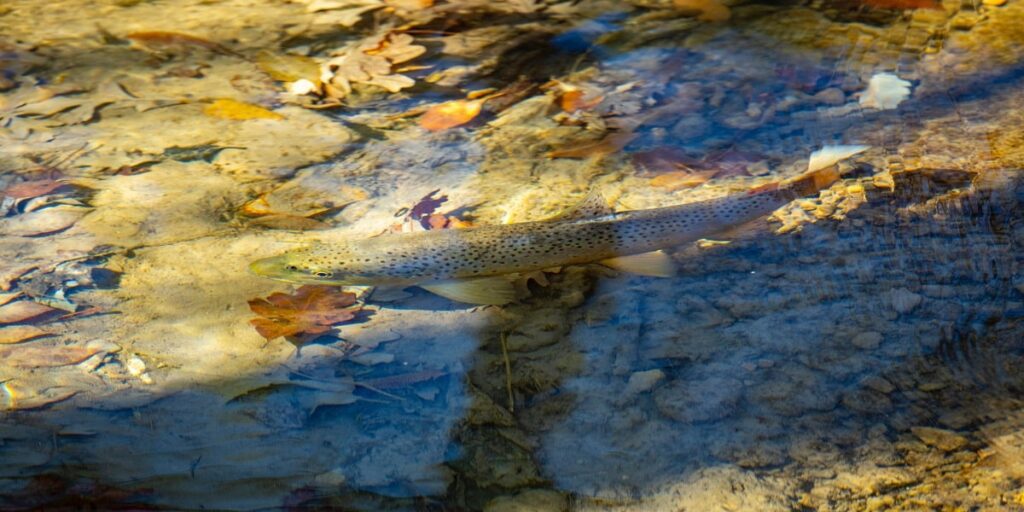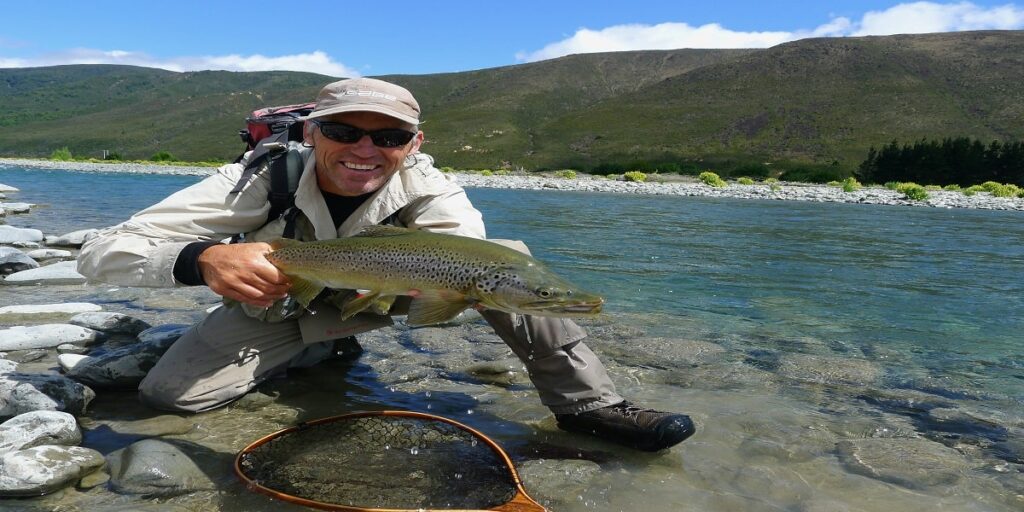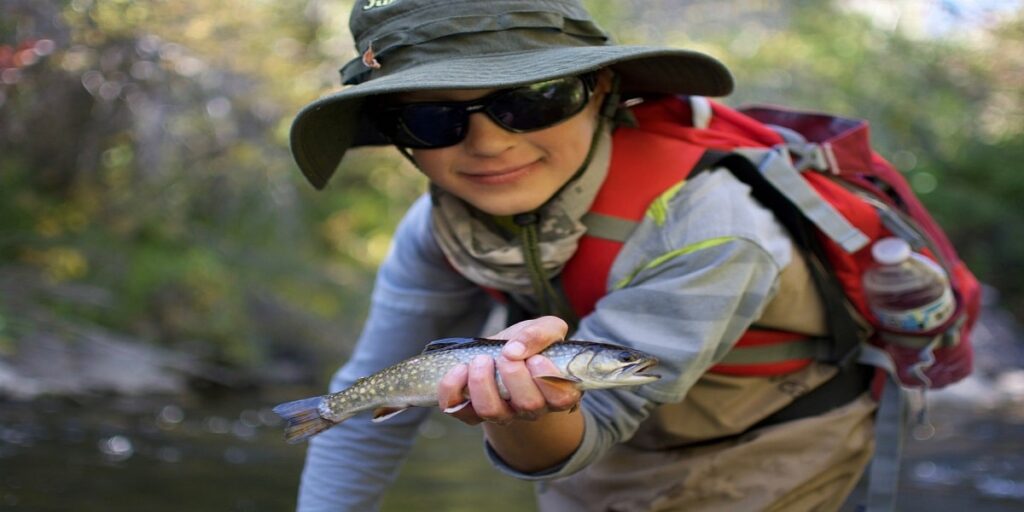Brown trout, including the sea trout and riverine variants, are freshwater and marine fish species that have captivated anglers for centuries. They’re spread across Europe, Asia, and North America. In this article we will explore the habitat of the Brown trout, along with their feeding habits, size and lifespan, record catches, how to identify, and the best techniques to catch them.
Brown Trout Habitat
Brown trout are highly adaptable and can be found in a variety of freshwater settings. They typically inhabit clear streams, rivers, and lakes. They prefer cool waters, especially those with fast-flowing sections, gravely bottoms, and plenty of cover. During warmer months, brown trout tend to stay in deeper, cooler waters, while in colder months, they may venture into shallower areas.

Feeding Habits
Brown trout are carnivorous, primarily feasting on insects, smaller fish, and crustaceans. They especially love mayflies, caddisflies, and stoneflies. In marine environments, like when they’re in their sea trout phase, they feed on small fishes and shrimp.
When fishing for brown trout, popular baits and lures include:
- Dry Flies – These replicate the adult form of aquatic insects and float on the water’s surface.
- Nymphs – These imitate the larvae of aquatic insects and are used below the water’s surface.
- Streamers – These are effective for imitating baitfish.
- Spinners and Spoons – These mimic small fish and can be very effective, especially for larger brown trout.
- Worms – Always a classic bait choice, they can be particularly effective in murkier waters or after a rain.
- Crayfish – Effective especially in streams and rivers where crayfish are abundant.
All bait’s effectiveness can change based on water conditions, the season, and the specific environment so when fishing for brown trout always be sure to ask other anglers what they find working.
Size and Lifespan
Brown trout can vary significantly in size based on their environment. In many streams and smaller rivers, they might average 1-2 pounds, but in larger waters or areas with less fishing pressure, they can grow much larger. It’s not uncommon for brown trout in prime habitats to reach 20 pounds or more. They can live up to 20 years, but a lifespan of 5-7 years is more typical.
Brown Trout Record Catches
Brown trout can grow much larger than many people assume. Some record catches for brown trout include:
- World Record Brown Trout – This currently stands at 44 lbs 5 oz (20.1 kg). It was caught from the Ohau Canal in New Zealand which is reputed for its large brown trout. The record is held by angler Seumas Petrie.
- UK Brown Trout Record – A commendable 31 lbs 12 oz, caught by Brian Rutland from the stunning Loch Awe, Scotland. This record has been in place since March 2002 so that is over 20 years at time of press!
- US Brown Trout Record – 40 lbs 4 oz from the Little Red River, Arkansas.
These records underscore the remarkable size Brown trout can attain in ideal conditions. Though most anglers may never catch one of record size, a Brown trout weighing 5lbs (2.3 kg) or more is a prized catch for anyone who pursues them.
How to Identify Brown Trout
Brown trout are distinguished by their sleek body and the presence of large black and red-orange spots, often with a pale halo, on their flanks. The background colour can vary from a greenish hue to a deep brown, often with a brassy appearance. Unlike carp, they don’t have barbels.
Their belly is usually pale and creamy. They might also have a few spots on their dorsal fin. The adipose fin, a small fin between the dorsal and tail fins, is a key identifier.

How to Catch Brown Trout
Brown trout can be elusive and wary of anglers, making them a challenging and rewarding catch. Light spinning tackle or fly-fishing gear is often the go-to choice.
For smaller trout, a light spinning setup with 4-6-pound test line works well. When fly fishing, a 4 to 5-weight rod with matching reel is often adequate.
For larger brown trout or when fishing in bigger rivers or lakes, heavier gear might be necessary. This might include a medium spinning rod with 8-12-pound test line or a 6 to 7-weight fly rod.

Conclusion
Brown trout are a prized catch for many anglers, admired for their beauty, cunning, and fight. Their global distribution and varied habitats mean that there are plenty of opportunities to pursue them. With knowledge, patience, and the right gear, anglers can experience the thrill of catching one of these fantastic fish.